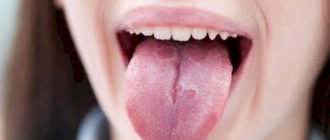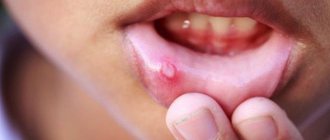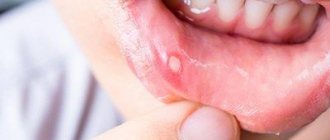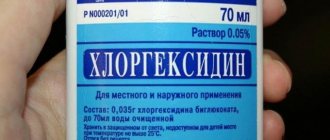September 23, 2021
Aphthous stomatitis is one of the most common inflammatory diseases of the oral cavity.
Aphthous stomatitis is one of the most common inflammatory diseases of the oral cavity. In this article we will tell you what additional examinations should be performed for recurrent stomatitis and how to treat this disease.
Stomatitis affects from 10 to 40% of the world's population. The diagnosis occurs with equal frequency in people in adulthood and childhood. Clinically, stomatitis manifests itself in the form of painful ulcers on the oral mucosa. Such formations are called aphthae. These pathological lesions are round, bright yellow formations with a bright red inflammatory rim in a circle. They can be located anywhere in the mouth, even on the tongue or gum. Sometimes there are multiple rashes.
The most common causes of stomatitis include viral or bacterial infections. Bacterial stomatitis is usually the result of dental problems and poor oral hygiene (for example, not brushing your teeth thoroughly enough). Sometimes aphthous stomatitis appears at the site of injury, burn or abrasion of the mucous membrane. Canker sores may also appear as a result of taking systemic antibacterial drugs.
Symptoms of stomatitis
- soreness of the oral cavity;
- bad breath;
- formation of ulcers in the mouth;
- increased body temperature (in severe and widespread form).
At the initial stage of stomatitis, the oral mucosa dries out in the affected areas and becomes shiny. After 1–2 days, a barely noticeable white coating appears. At the next stage of stomatitis, ulcers appear, which are called aphthae. The chronic form of stomatitis is diagnosed when several pathological lesions form in the oral cavity more often than once a year.
Diet for stomatitis.
The diet for stomatitis should consist mainly of liquid food or food passed through a blender (puree consistency) to prevent injury to the affected areas. Foods with a pronounced irritant effect (garlic, onions, oranges, lemons, strawberries and other sour fruits and berries) should be excluded from the diet. Sugar-containing foods and sweets are excluded from the diet, as this is an ideal breeding ground for bacteria. Preference should be given to light pureed vegetable soups (broccoli or pumpkin puree soup, cauliflower or asparagus). Any vegetables, root vegetables (carrots, beets, potatoes) and greens are welcome, but in a soft (puree) form.
Diagnostics
Most often, the diagnosis is made by a dentist after examining the oral cavity. In some cases, the doctor may prescribe additional examinations (bacterial culture, PCR smear, etc.) to detect candidiasis or the herpes virus. In case of massive damage to the oral cavity (severe forms of stomatitis), it is necessary to conduct a blood test and seek advice from a therapist. During diagnosis, it is important to distinguish between herpetic and aphthous forms of stomatitis, since different special therapy is chosen for them.
Folk remedies for stomatitis in children
Treatment of stomatitis in children with folk remedies involves the following measures:
- rinsing with antiseptic solutions;
- wiping the affected surface of the mucous membrane with medicinal decoctions;
- applying medicinal mixtures to the surface of the ulcers.
For rinsing it is best to use:
- water-soda solution (1 teaspoon of soda per 1 glass of water);
- decoction of calendula or chamomile flowers.
Suitable for wiping:
- propolis tincture solution;
- calendula tincture solution;
- freshly squeezed aloe juice.
Apply to the surface of the ulcers:
- honey;
- egg white;
- rose jam;
- a mixture of egg white, honey and novocaine.
The drugs are applied to the surface of the mucous membrane until completely absorbed.
Disease prevention
To prevent the disease from developing or becoming chronic, it is necessary to keep your mouth clean, eat well, and give up smoking and other bad habits. It is important to promptly treat other oral diseases, such as periodontitis, gingivitis, glossitis, caries. If you suffer from chronic stomatitis, regular visits to the dentist are recommended. It is necessary to pay attention to the general condition of the body, monitor the state of the gastrointestinal tract and cardiovascular system, take vitamin complexes, get adequate sleep and lead an active lifestyle. As a preventative measure, you can rinse your mouth with a decoction of chamomile or sage, as well as warm saline solution.
Herbal infusions
In modern herbal medicine, both herbal decoctions (chamomile, sage, yarrow, oak bark) and tinctures (calendula, propolis) are used to successfully treat oral diseases. Traditional methods of treating stomatitis allow you to:
- relieve inflammation of the mucous membrane;
- reduce pain and swelling;
- relieve itching, reduce burning sensation;
- cure ulcers (aphthae) formed on the surface of the mucous membrane;
- improve the patient’s overall well-being;
- prevent relapses of the disease.
Chamomile, aloe, sage, oak bark for stomatitis can significantly reduce swelling and soreness of the mucous membrane, and prevent the development of the inflammatory process. They have an anti-inflammatory effect.
Herbal infusions can be used either alone or in combination with traditional medicines.
- Decoctions . To prepare them, you need to grind the herb in a coffee grinder, pour boiling water over it in a certain proportion, boil for at least 10 minutes, and then leave to infuse. A decoction is prepared from one plant (for example, chamomile, calendula, sage, St. John's wort) or from several (herbal mixture). After infusion, it should be strained and stored in the refrigerator for no more than three days. In the treatment of oral diseases, decoctions of chamomile, yarrow, sage, calendula, and cinquefoil are most often used. It should be remembered that when treating stomatitis with herbs, the therapeutic effect does not occur immediately, but 1-3 weeks after the start of therapy. Therefore, the patient must tune in to a long-term regular process.
- Infusions . They are prepared in much the same way, only they should not be boiled. Usually the herbal mixture is poured with boiling water, tightly closed and infused, after which it is filtered. It should be stored in the refrigerator and diluted with water before use. Infusions are prepared from the same herbs as decoctions. You can infuse herbs not with water, but with alcohol. They have a powerful antiseptic and anti-inflammatory effect.
- Solutions . Medicinal solutions are prepared immediately before use; their preparation consists of diluting the finished product with boiled water to obtain the required consistency. In no case should you apply undiluted alcohol infusions to the surface affected by stomatitis, as there is a high probability of getting a burn to the mucous membrane.
General approaches to the treatment of childhood stomatitis
A child who experiences any symptoms of the disease must contact a specialist. It is almost impossible to cure stomatitis on your own, and delaying treatment can cause serious complications, both in newborns and older children.
- It is advisable to isolate a sick child from using common household items in the family. It is worth providing him with separate dishes, cutlery and towels. If there are other children in the family, then it is necessary to minimize contact through shared toys.
- Strict oral hygiene is recommended to prevent secondary infection and worsening of the disease. For example, a child under one year old should treat the oral mucosa with special wipes with xylitol or another antiseptic. Children over one year of age can rinse their mouths with antiseptic solutions before and after meals. To clean your teeth, you should purchase a toothbrush with soft bristles that will not injure the inflamed surface of your gums or tongue.
- When stomatitis occurs in newborns or infants, special attention is paid to the treatment of nipples, feeding bottles, pacifiers and nipples of the mother's mammary glands.
- Eating any food usually brings severe pain to the child. To reduce sensitivity, anesthetic gels and sprays are used.
- Particular attention in the effective treatment of stomatitis is given to nutrition. The food you eat should be at body temperature. All irritating, sour and spicy foods are excluded from the diet. In case of severe pain, you can offer the child to eat homogenized liquid food through a wide tube. Nutrition should be balanced and contain sufficient amounts of nutrients, as well as vitamins and minerals.
For stomatitis, Dr. Komarovsky recommends paying special attention to the microclimate of the room in which the sick baby is located. The room must be well ventilated twice a day. In winter, the air must be humidified using special humidifiers.
Types and forms of stomatitis
Depending on the causes or pathogens that caused the disease, several types are distinguished:
- Infectious: usually affect large areas of the mucous membrane, cause redness, pain, foul odor, characteristic plaque, and can lead to ulceration. Often accompanied by a deterioration in general health: febrile symptoms, weakness. Infectious diseases include viral, bacterial, and herpes. Such stomatitis lasts a long time and is prone to relapse. In severe cases, infections cause necrotization of the affected tissues, requiring surgical treatment.
- Allergic: mild. Inflammation of the mucous membranes occurs as a response to exposure to an allergen. When the harmful product or drug is excluded, the symptoms disappear on their own. Allergies do not cause deep damage. Sometimes there are enlarged lymph nodes and inflammation of the tongue.
- Traumatic: occur as a result of one-time or regular damage to the mucous membrane. Inflammation after mechanical trauma is localized in places of scratches; when exposed to hot or spicy foods, the entire area of the oral cavity usually suffers. The severity of the course depends on the degree of damage to the mucosa. With timely treatment, wounds quickly heal and inflammation subsides.
The catarrhal form of stomatitis is the mildest. It does not affect the deep layers of tissue and is manifested by increased salivation, swelling and redness. This is how allergies manifest themselves, burns from hot or overly sour foods, and the initial symptoms of some infections, including candidiasis.
The ulcerative form is a continuation of the catarrhal form in the absence of treatment, a characteristic picture as a result of deep damage or severe infection. With this stomatitis, the entire thickness of the mucous membrane is affected. Formations can be single or multiple.
Aphthous stomatitis can be a manifestation of a herpetic infection or a symptom of serious systemic diseases. Its sign is the formation of deep round ulcers with a red border and a yellowish surface.
Basic treatment methods
Treatment methods are selected individually after determining the type of stomatitis. Actions are aimed at eliminating pathogenic symptoms. In the case of a viral form of the disease, Acyclovir is taken orally. The drug has a pronounced antiviral effect. According to the instructions, it is prescribed to children from 2 years of age; if necessary, pediatricians prescribe it to infants. In case of an allergic form, be sure to take antihistamines.
The main methods of treatment are lotions, rinsing, treatment of the oral cavity, and the use of special topical preparations (cream, gel). The easiest way is to rinse or frequently treat the mucous membrane with a baking soda solution. For 500 ml of water 1 tbsp. spoon of the product. Sea buckthorn oil, chamomile decoction, calendula tincture, and special ointments are used.
Standard treatment regimen
| Type of disease | Rinsing | Antifungal, anti-inflammatory agents for topical use | Antihistamines by mouth | Antiviral drugs by mouth |
| Candidal stomatitis | Soda solution, chamomile infusion, calendula infusion | Tranexam, Cholisal, Natamycin | ||
| Herpetic | Oxolinic ointment | Acyclovir | ||
| Allergic | L-cet, Claritin, Suprastin |
Treatment is selected individually in each case.
Causes of stomatitis
The concept of “stomatitis” combines inflammatory processes in the oral cavity of different origins. They develop at any age. Children suffer more often due to ignorance of hygiene rules and problems with cutting new teeth. But this pathology is not uncommon in adults either. The disease usually begins with redness and swelling of the mucous membrane. Over time, ulcers, wounds, pustules may form on the affected areas, a yellowish or gray coating may appear, and bleeding is possible. When the sores are touched with the tongue, teeth or pieces of food, sharp pain occurs. Stomatitis is often complicated by gingivitis - inflammation of the periodontal papillae of the gums.
The development of pathology is caused by:
- infectious lesions: own conditionally pathogenic or extracellular microflora: bacteria, fungi, viruses;
- unbalanced diet: a deficiency in the diet of zinc, folic acid, vitamin C, iron and other important elements often provokes erosive lesions of the mucous membranes;
- weakening of the immune system: an additional factor in the activity of pathogenic microorganisms;
- side effects of certain medications: sometimes it manifests itself as dryness of the mucous membranes, their thinning and damage;
- injury: mechanical, chemical or thermal;
- Individual intolerance to any foods can also manifest itself as stomatitis.
Frequent root causes of stomatitis: improper prosthetics, bad eating habits. Touching the inner surface of the cheeks or lips with the sharp edges of the crowns can damage them. And the love for hot food, hot spices, and vinegar also does not leave its mark on the mucous membranes. Bones, nut shells, and other hard particles scratch the delicate epithelium, and the moist environment of the oral cavity contributes to the further pathological process. In smokers, stomatitis is often caused by exposure to toxic tars, excessive dryness of the mucous membrane, and impaired capillary circulation. Systemic diseases, including diabetes mellitus or HIV infection, are also risk factors.
Why can’t stomatitis be treated without the participation of a doctor?
Of course, the use of medicinal ointments and preparations, special lotions and rinses for the oral cavity does not require hospital conditions and strict supervision by doctors. Indeed, you can heal yourself.
However, your decisions and actions should always be in consultation with your healthcare provider. Do not take any action or purchase medications yourself.
One careless mistake can lead to a complicated course of the disease and an increase in the inflammatory process!
What happens if stomatitis is not treated?
Some parents do not take their child’s stomatitis seriously, they say, “it will go away on its own.” Such an attitude towards the baby’s health can lead to serious consequences. Without treatment, the infection can spread to the skin of the face. There is also a high risk of secondary infection. And this already threatens general intoxication of the body, damage to the nervous system, etc., even death. Therefore, doctors strongly recommend that if symptoms of the disease are detected, show the child to a specialist in order to avoid negative health consequences.










